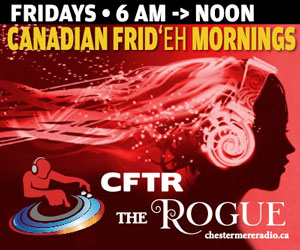Ireland is currently in the throes of a second whiskey renaissance, and your intrepid liquor reporter is doing his part down at the local watering hole.
For those not familiar with the spirits of the Emerald Isle, Ireland has long punched above its weight in the world of booze.
It all started more than 600 years ago, when it was just assumed that every good Irishman would have a simple pot still at home to provide hooch for the family.
Whiskey is an anglicized version of the Gaelic term “uisce beatha”, meaning “water of life”, which in turn comes from the Latin term aqua vitae, which was the commonly used term for distilled spirits in the Middle Ages.
Although the origin story has been lost in the mists of time, the generally accepted theory is that Irish monks learned the techniques for distilling perfumes while traveling in Mediterranean countries around 1000CE, which was later adapted for making booze, which eventually became known as Irish Whiskey.
In the interests of good neighbourly relations, your humble narrator suggests that you never mention that the Irish were the first to distill whiskey while in the presence of a Scotsman, or there shall surely be harsh words.
Despite the blow to Scottish pride, there is now general agreement that the Irish were making whiskey as early as the 1200s, while the Scottish did not begin whisky production until the 1400s.
Scotland eventually surpassed Ireland in whiskey production, but it took four centuries to do so. Up until the early 1900s, Irish Whiskey was considered the best in the world, and was outselling Scotch Whisky five to one.
Tragically, a series of unfortunate events led to the downfall and near extinction of the Irish Whiskey industry.
It began with the invention of the column still, which allowed continuous distillation. The Irish distillers preferred the batch distillation methods of their traditional pot stills, as it was felt that they produced a more flavourful spirit, despite taking much longer.
After the column still was soundly rejected by the Irish distillers, its inventor pitched his idea to several Scottish distillers, who quickly saw the financial benefits of running a continuous distillation process, so the Scotch Whisky industry quickly switched to column stills, which allowed for significant cost savings.
The Irish distillers were still not too worried about competition from Scotland, as Irish Whiskey was still by far the most popular spirit in the world, and widely shipped to all corners of the British Empire.
However, the Irish War of Independence broke out in 1919, which resulted in Irish Whiskey being embargoed at all ports of the British Empire, instantly losing access to their most lucrative markets.
The final nail in the coffin came a year later, when the USA entered their own dark days of prohibition in 1920, eliminating the last big overseas market for Irish Whiskey.
By the 1960s, the last few remaining Irish distilleries had to amalgamate in order to survive. Irish Whiskey was near the brink of extinction until the late 1980s, but is now on the upswing, thanks to a resurgence in world demand for whiskey.
Fast-forward a few decades until the present day, and Irish Whiskey is now the fastest-growing spirit in the world, with year-on-year growth of 15-20%.
The big brands of Irish Whiskey are Black Bush, Bushmills, Jameson, and Tullamore Dew, all of which can be found in pretty much any neighbourhood booze merchant or drinking establishment.
In addition to the big names that you will find everywhere, Irelend is experiencing a boom of craft distilleries, with more than a dozen new distilleries opening last year.
My personal favourite is Jameson, which also happens to be the most popular Irish Whiskey, and is available at your nearest booze merchant for around $35/bottle.
Jameson is a particularly easy-drinking and smooth blended whiskey, with notes of toasted wood, sherry, and a slightly nutty finish. The unwashed masses like to mix it with Ginger Ale, but your intrepid liquor reporter is far too snobbish to adulterate his booze that way.
While your humble narrator will always find time for Rye, Bourbon, and Scotch, 2017 is Irish Whiskey’s time in the spotlight, so see what all the fuss is about by trying some today!






